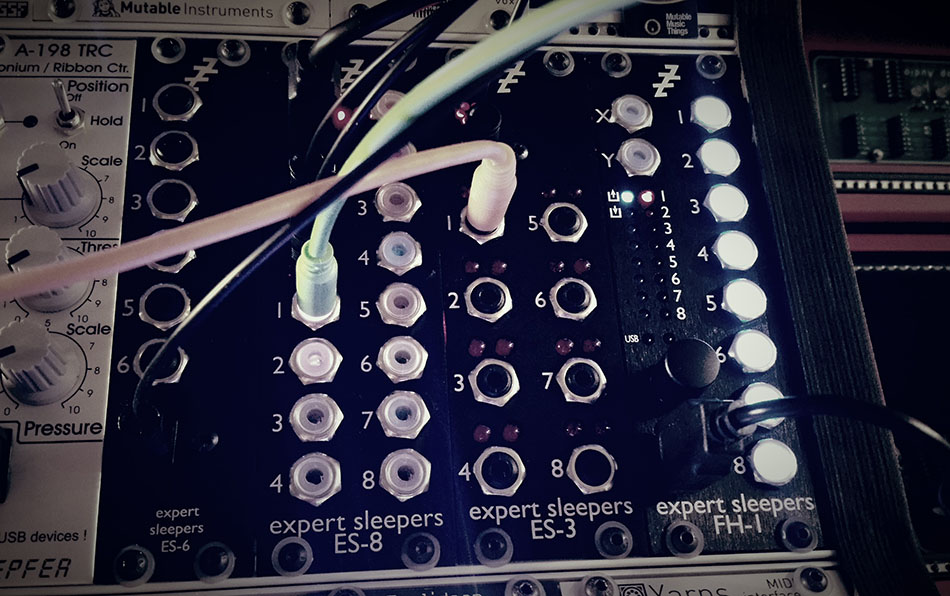
Audio routing is no easy task; as a matter of fact, this is one of the most frustrating parts of learning how to work with audio hardware and software. So, instead of working up a patch, I’ve just spent far too much of my night aggregating various sound interfaces together. The objective was to get the Expert Sleepers ES-8 audio out of the module without having to go mono out using one of the jack ports but to have stereo out handled by the USB. Good luck finding documentation on this. Piecing things together, I knew that ASIO4ALL might be able to play a role; I’m on Windows 1o and understand this is easier on a Mac. So what I now have set up is 10 CV/Audio inputs and 16 CV/Audio outputs shared between the ES-6, ES-8, and ES-3. The FH-1 on the right is the interface from my Roli Seaboard Rise into the modular rig; I’m still lacking confidence in how this works, too. Finally, I have the ins and outs mapped within Bitwig, but it is not elegant and requires a bit of hunting for which ports were which among over 34 aggregate in ports and 30 out ports. Next up, I need to figure out how to get a nice clean signal out of my final mix and into my camera so I can record audio of an appropriate quality, befitting the setup and investment in this system.
I do currently have a problem with this setup. In Bitwig, when monitoring or recording audio I’m getting noise in short bursts from time to time. It might not happen for minutes, and then there’s a short two or three-second burst. Reading about aggregating devices, it seems it could be a buffer issue where the weakest audio interface in the chain is the culprit. So, maybe I have to revert to a different configuration. Sometimes, you feel incredibly helpless trying to figure out a setup that might be unique in all the world to you.
One Reply to “Signal Routing”